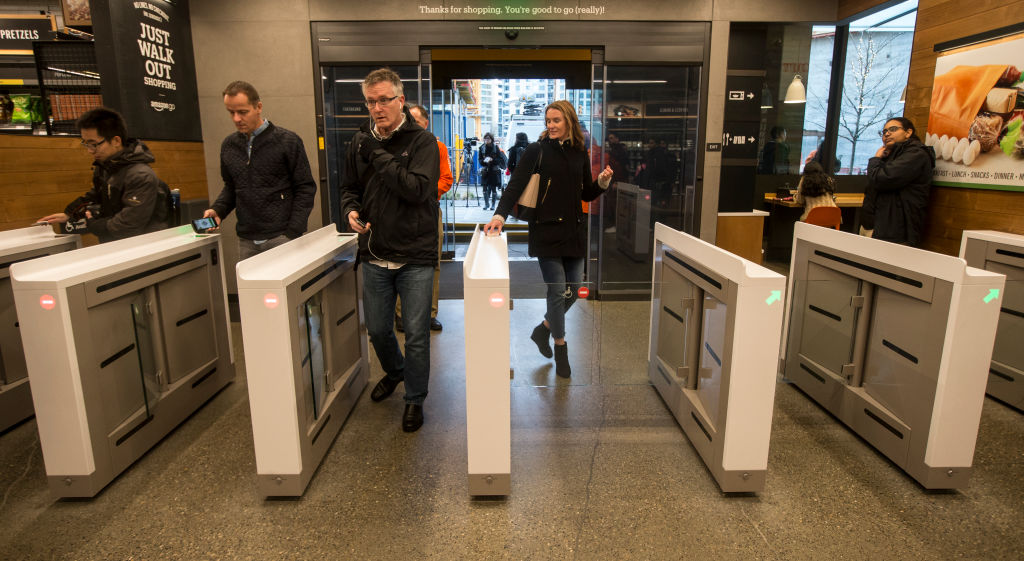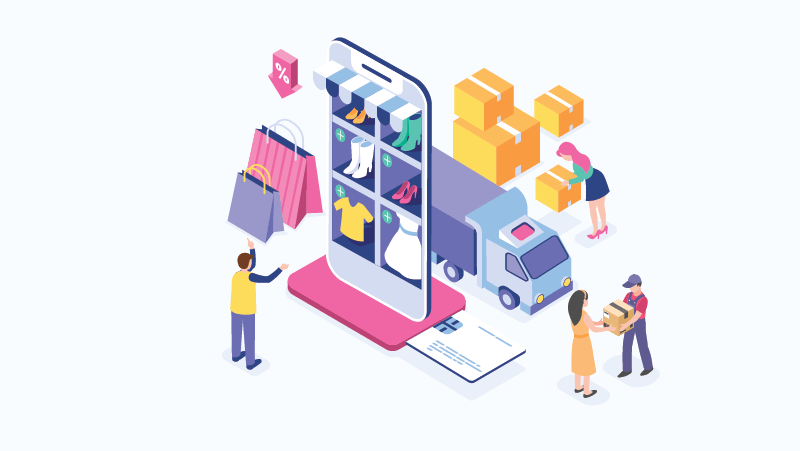The internet makes so many things better, including the experience of buying and selling online. That said, shop floors still have a charm of their own. Customers love experiencing products, and retailers are always on the lookout for ways to actually sell those products.
What is Showrooming?
Where people only just browse through without making a purchase, it is called showrooming. Showrooming undoubtedly has the potential to negatively impact physical retail locations.
However, there are certain elements of the shopping experience that simply cannot be duplicated by the internet. By placing emphasis on these aspects of your business, you’re making it worthwhile for people to bring their wallets up to your counter.
Related: The Complete Guide To Opening And Operating retail Stores
Showrooming vs. Webrooming
When showrooming happens in an online store, it is called webrooming. To be sure, it is possible that some of the customers who abandon a purchase on one channel complete it on another. However, retailers need a way of tracking this so they know how many visits (offline and online) have actually led to conversions.
Not doing this can lead you to draw the wrong conclusions- such as deciding to shut your store because all sales are happening online. Instead, it could be that your customers are using your store as a touchpoint and would miss it when it closes.
8 ways your Retail shop can Combat Showrooming
-
Encourage Their Loyalty
Loyalty programs are great for maintaining repeat business, but there are other advantages that may mean even more for your retail stores.
When you implement a loyalty program, people have something to work towards. Every purchase with you is a step toward achieving a goal, whether it’s a lofty discount, a free gift, or some other exclusive perk. The key is to make these targets achievable.


If you offer enough of these rewards, people may be willing to look past how much they may be spending. If something’s a little cheaper on the internet, that cheapness won’t roll into a reward. Your loyalty program will.
Starbucks has seen exceptional success with its loyalty program, where the average customer spends $62.50 to obtain a free drink of varying value. The signs show that people love their loyalty programs. They’re willing to stick around for the long haul in order to see a return.
-
Provide Added Value
If you don’t offer to package online, or if competitors selling the same or similar products don’t provide that luxe part of the experience, you can get ahead in the game by making your packaging in offline stores special. This is a great strategy for stores that sell accessories, jewelry, cosmetics, handmade goods, or artisan goods.


Even if that’s not the case, you can always provide gifts with a purchase or free samples that only apply to in-store purchases. You can even extend this experience to cover online purchases if you’re most focused on sales and don’t particularly mind where they come from.
Many customers perceive these bonuses as offsetting the costs, even if they found something similar for less money elsewhere.
They’re spending a little more, but they’re also getting a little more.
Even if the cost of these goods is low (or free to you, like samples provided as a marketing effort by a brand you stock), the offer will seem enticing.
-
Offer In-Store Exclusives
At the end of the day, exclusivity is what sets you apart from your competitors. If they’re all selling the same things and some of them are priced cheaper, there’s no real reason for people to select buying from your retail location over purchasing something for less money on the internet.


You need to have things that nobody else has, and make them available exclusively in your retail stores.
Envision this fictional scenario. Your toy store is selling the same teddy bear that many other retail locations are selling. People love collecting these teddy bears, and they come in a dozen variations.
You work with the manufacturer to obtain exclusive rights to a new variation that people won’t be able to get anywhere else. If people want it, they’ll have to come to you.
An alternative involving fewer contracts and agreements is to create exclusive in-house merchandise.
Utilize your own designs. Invent something. Create anything proprietary.
When you do so, you’re ensuring that people will have no choice but to buy these things from you because they don’t exist in the wild. Many clothing retail stores use this same model to thrive – all of their clothes are in-house designs that people are never going to find anywhere else.
Try hiring some designers. It may be expensive to go solo, but doing so will render showrooming obsolete.
-
Provide Excellent Customer Service
They can read a million blog posts before they make a purchase, and they’ll have a little more peace of mind when they go to check out.
The only problem with relying on those blog posts is that they’re written from someone’s unique perspective, and that person may have entirely different needs from the reader. Nothing is more effective than a personalized consultation.


Let your sales staff do what they were born to do – be creative, and have fun. If they can provide a personalized experience for everyone who walks through your door, people are going to feel enriched and rewarded for having visited you.
Make your customers feel like friends by allowing your sales staff to become friendly, knowledgeable shopping buddies that will ensure everyone leaves with exactly what they need.
Create an excellent company culture, keep the breakroom stocked with snacks, and celebrate all of your shared victories. In turn, this will translate into a great customer experience.
-
Merge The Offline-Online Gap
As we’ve seen, one of the reasons for showrooming could be that your customers are using the store as an experience center. Then, they go online to place the order. Why not increase the chances of conversion by letting them do that in the store instead?
Usually, when a customer browses in-store and buys online, they need time to deliberate. Since your store is anyway an experience center, give them conveniences. Have a small coffee shop or a play area for the kids. Place your online order kiosks close to the path of exit. This gives them a chance to reconsider and make an informed decision.
The same goes for webrooming, too. If you aren’t converting much online, host-specific sales and contests that drive more customers to the store or encourage them to order online.
-
Ask For Feedback
If you’ve tried all of this and nothing seems to work, try getting specific feedback. However, what customers offer as feedback and what they actually want can be quite different. If you have the budget, it may be worthwhile to invest in a behavioral economist. They can read survey data better to tell you what changes you need to make.
More often than not, it is usually a single point of influence that prevents people from converting. You just need to figure that out and work on it.
-
Empower Customers To Go Omnichannel
Sometimes, a customer might come in with the intent to buy. However, when they don’t find what they’re looking for, they just leave. Encourage customers to place orders online for products that are out of stock. You can easily facilitate this, and even jazz the process up with an iPad POS.
This also lets people know that you have an online presence and that they can shop in a way that works for them.
-
When All Else Fails, Try Price Matching


Many big box stores will price match their competitors in an effort to combat showrooming and avoid losing customers. If you’re having a hard time getting people to buy from your retail locations, price matching might fix the problem. People buy online because it’s cheaper, not because they like waiting for their orders to be processed, packaged, and shipped to them. If you can match the price they found online, you’re solving a substantial problem for them.They’re getting what they want for the price they’re comfortable paying, on the same day. Providing this kind of instant gratification will make you invaluable to budget-conscious shoppers.
Physical locations now have to compete with the internet, and the internet is perhaps the most formidable competitor.
Utilize a combination of loyalty, exclusivity, and service standards to create sustainable businesses. This way, you won’t take a massive hit from showrooming. When all else fails, observe successful retail locations that aren’t being significantly damaged by showrooming. Do what they do, and do it better.
About Evie:
Evie Cooper is an experienced project leader supporting UkAreaCode and Postcode-Checker – online knowledge libraries. She is also an avid business blogger, who often shares her tips and tricks about growing a successful company and acquiring more customers. Feel free to reach out to her on Twitter @CooperEviee.
Request Demo
thank you
thank you
thank you
Request Demo
window.IS_INDIA = 0;window.USER_COUNTRY = 'China';window.USER_CITY = 'Hangzhou';window.USER_COUNTRY_ISO = 'CN';
(function(d){var s=d.createElement('script');s.type='text/javascript';s.src='https://a.omappapi.com/app/js/api.min.js';s.async=true;s.dataset.campaign='cxecxy09nlvnnyvfiqjf';s.dataset.user='22867';d.getElementsByTagName('head')[0].appendChild(s);})(document);
,



